Archive
Hans Jacoby
- Hans
- Jacoby
Yang Ku Ba; Hans Jacobi
- 06-11-1900
- Dresden (DE)
- 28-10-1074
- Miami (US)
- Artist
Hans Jacoby fled in 1938 to the Netherlands, where he was interned by the Dutch government in Hook of Holland. He was able to leave the camp and arrived, together with his wife Emma Jacoby, in Shanghai in 1940 where he continued to work as an artist.
Word Count: 45

Photograph, Hans Jacoby, 1940, Hans Jacoby Collection (© Leo Baeck Institute, New York). 
Hans Jacoby, Chinese Theatre Masks, oil on canvas, 66,6 x 58 cm, Shanghai, 1941, Hans Jacoby Collection (© Leo Baeck Institute, New York). 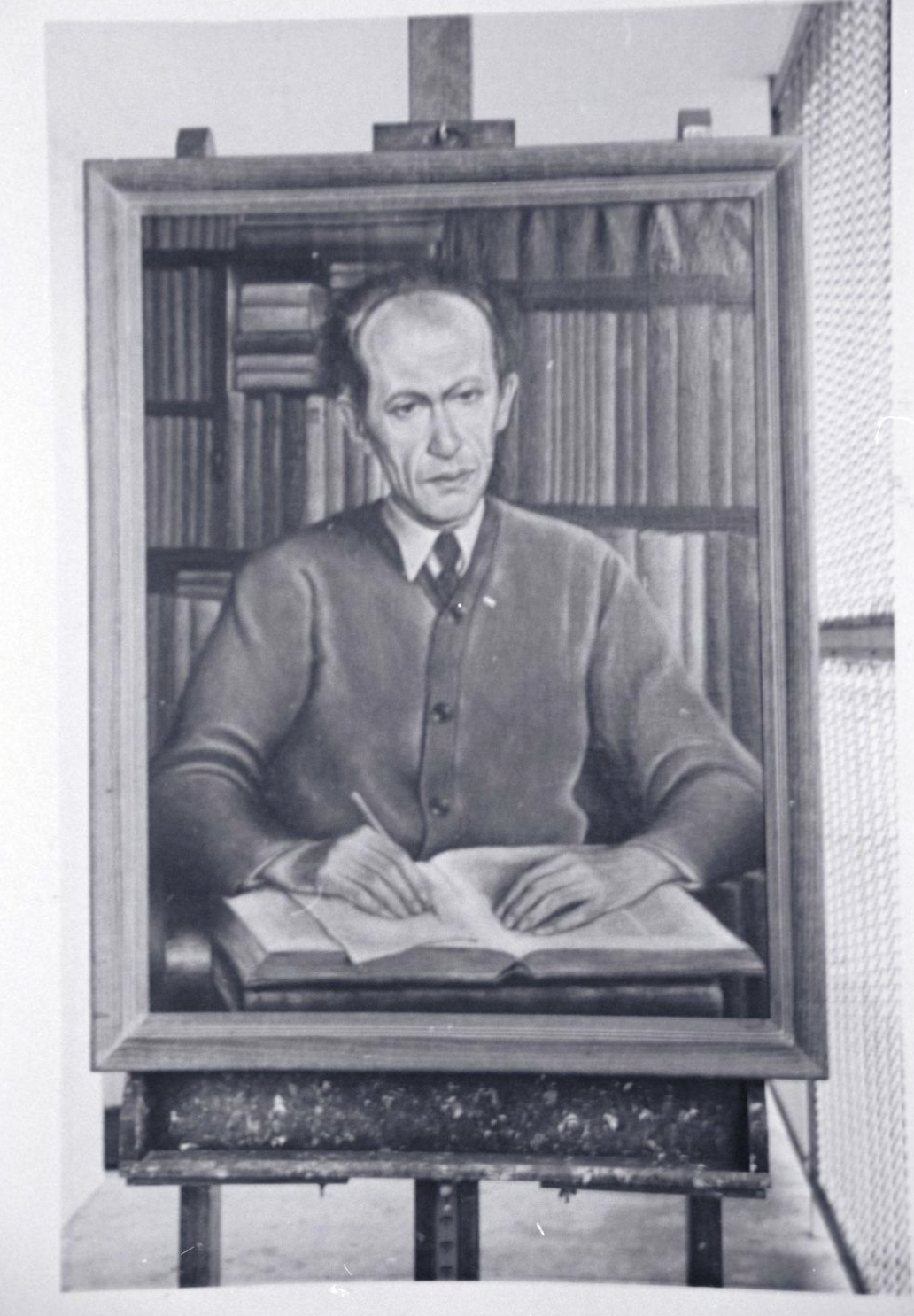
Portrait of Willy Tonn, painting by Hans Jacoby, photography, Hans Jacoby Collection (© Leo Baeck Institute, New York). 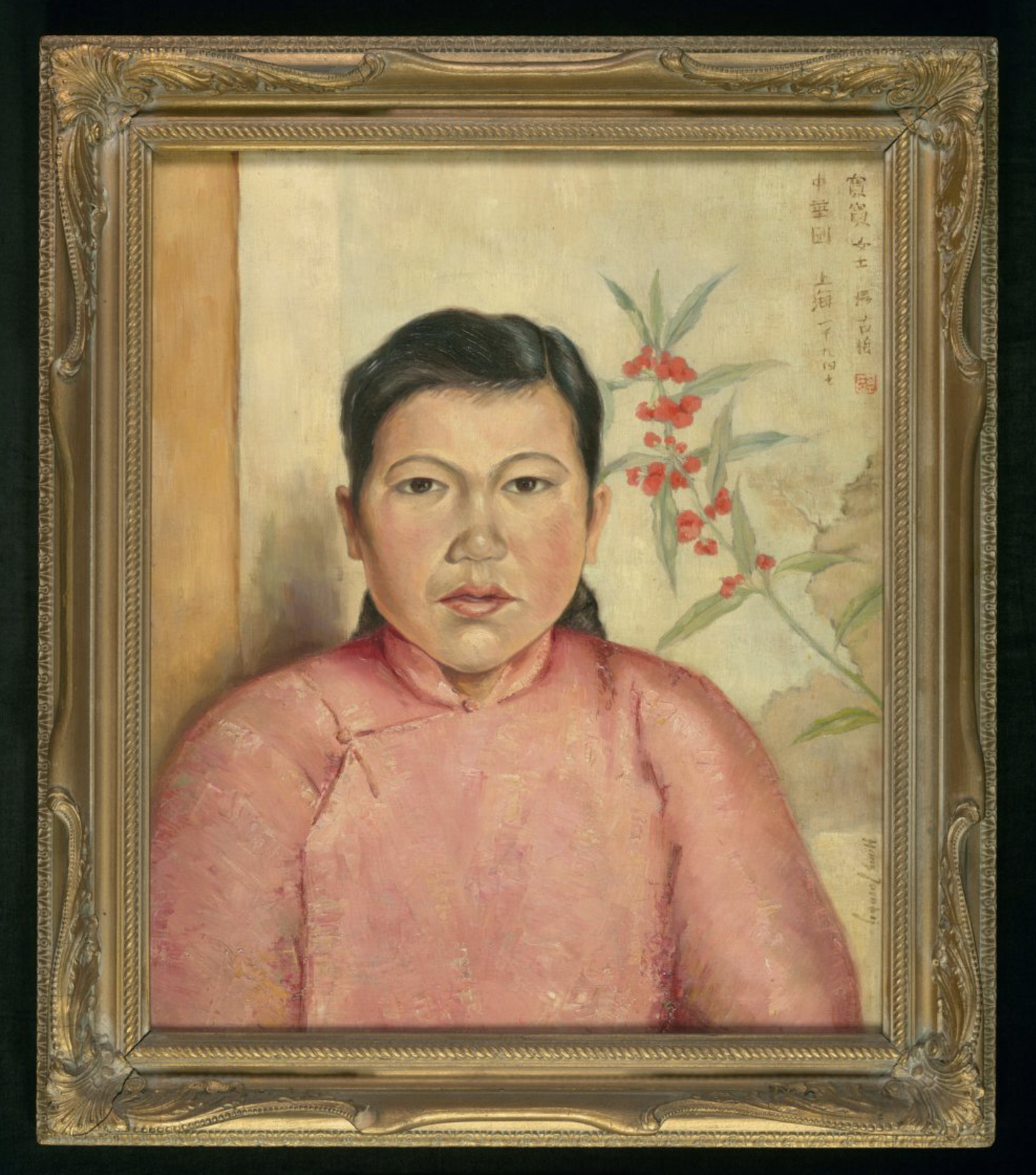
Hans Jacoby, Portrait of Bao Bao, oil on canvas, 60.2 x 50 cm around 1940 [probably 1943 or later], Shanghai, Hans Jacoby Collection (© Leo Baeck Institute, New York). 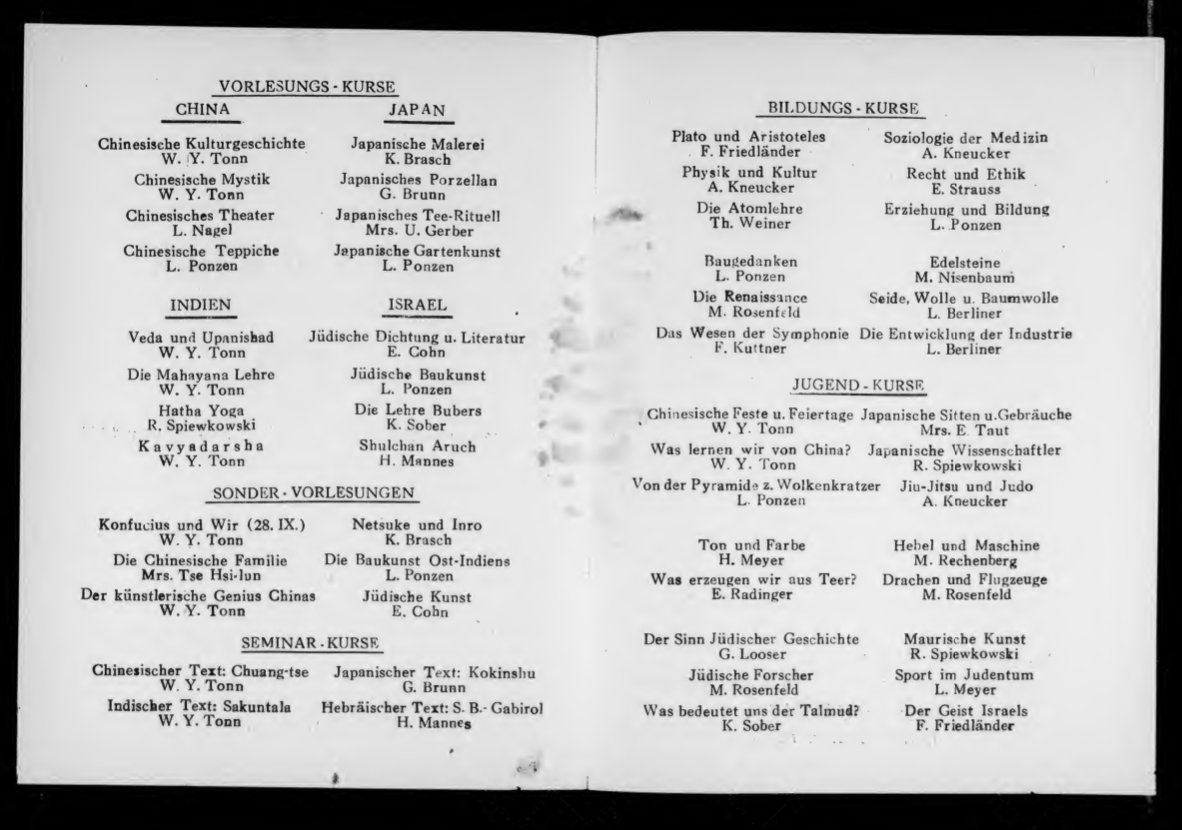
Asia Seminar, programme, winter semester 1943/44, Hans Jacoby Collection, Box 1, Folder 5 (© Leo Baeck Institute, New York). 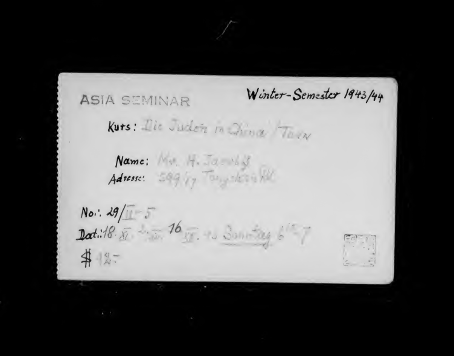
Asia Seminar, card of Hans Jacoby, winter semester 1943/44, Hans Jacoby Collection, Box 1, Folder 5 (© Leo Baeck Institute, New York). 
Hans Jacoby, drawing of religious figure, Shanghai, Hans Jacoby Collection (© Leo Baeck Institute, New York). 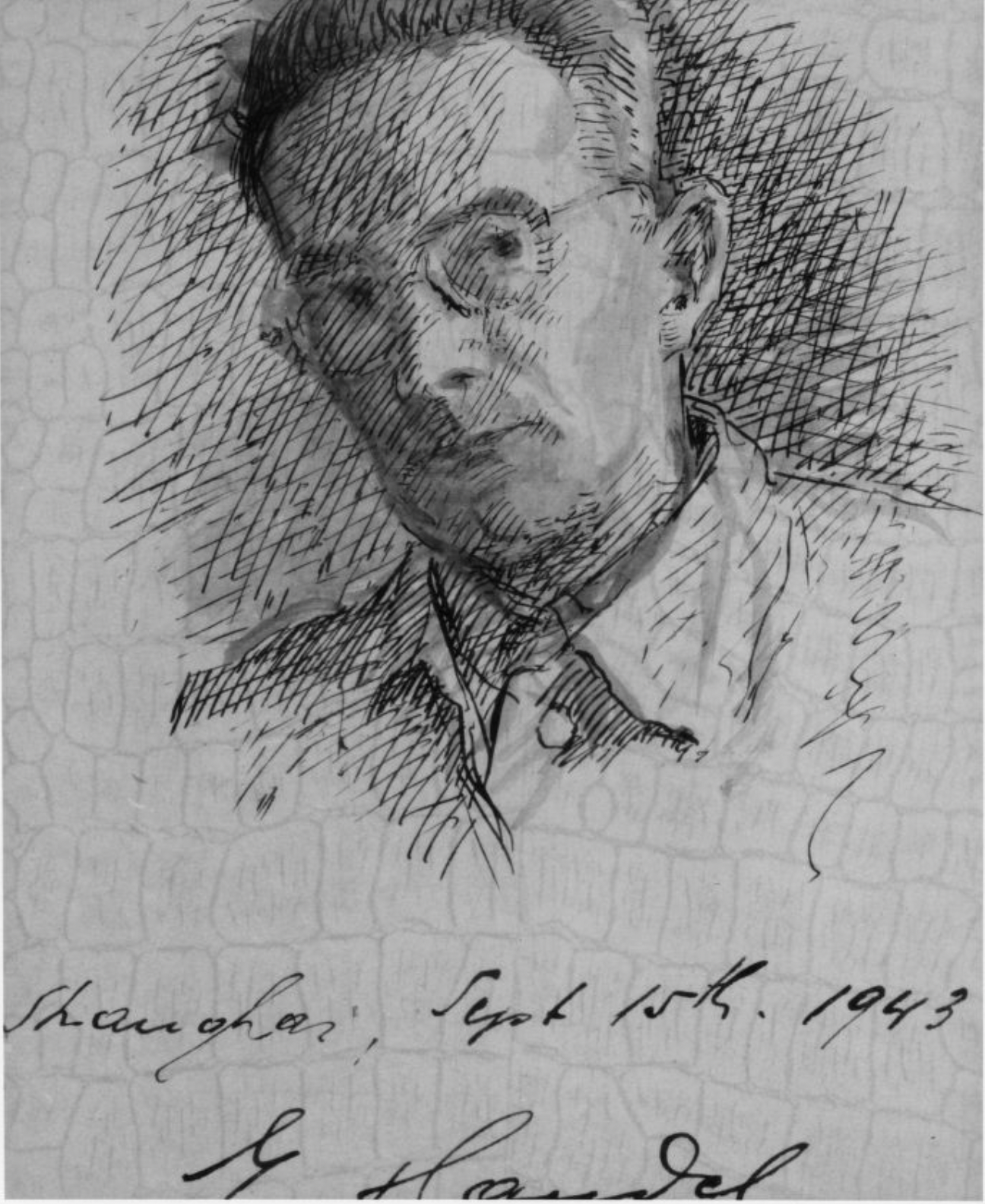
Ernst Handl, Self Portrait, drawing, 15 September 1943, Shanghai, Hans Jacoby Collection (© Leo Baeck Institute, New York). Leo Back Institute, New York, Hans Jacoby Collection
Word Count: 8
Shanghai, China (1941–1947), USA
Columbia Road, Western District Extension, (now Panyu Lu, Changning Lu); Yu Yuan Road, Western District Extension (now Changning Qu); Seymour Road, International Settlement (now Shaanxi Bei Lu, Putuo Qu); 519 Tongshan Road, Hongkou (now Tangshan Lu, Hongkou Qu), Shanghai (residence, studio, doctor practice) Shanghai
- Shanghai
- Mareike Hetschold. "Hans Jacoby." METROMOD Archive, 2021, https://archive.metromod.net/viewer.p/69/2952/object/5138-8103922, last modified: 15-09-2021.
-
David Ludwig BlochArtistShanghai
David Ludwig Bloch is known for his paintings and watercolours revolving around the Holocaust and his exile. With the woodcuts from his time in exile in Shanghai, Bloch created an artistic account of everyday life in the city, while harvesting the simplicity of form and colour of the medium.
Word Count: 49
Hermann SchieberthPhotographerArt dealerShanghaiHermann Schieberth was a successful photographer who had two studios in Austria (from 1909/10? onwards): one in Vienna and the other in Kaltenleutgeben. Due to his Jewish background he had to flee in 1938 and arrived in Shanghai in 1939.
Word Count: 37
Association of Jewish Artists and Fine Art Lovers (ARTA)AssociationShanghaiSeven Jewish artists living in the so-called Shanghai Ghetto joined together to form an art association in 1943. The founding members were: David Ludwig Bloch, Paul Fischer, Fred Fredden Goldberg, Ernst Handl, Max Heimann, Hans Jacoby and Alfred Mark.
Word Count: 38
Asia SeminarUniversity / Higher Education Institute / Research InstituteShanghaiThe Asia Seminar was run by the scholar Willy Tonn (1902–1945), who founded it in 1943 and enriched the cultural and scholarly life in the so-called Shanghai Ghetto during the harsh wartime period.
Word Count: 31
St. John’s UniversityUniversity / Higher Education Institute / Research InstituteShanghaiIn the first half of the 20th century, St. John’s University in Shanghai was an important Protestant university under American leadership. During the 1940s, German emigrants also taught there, after British and American university lecturers were interned in the wake of the Japanese attack on Pearl Harbor.
Word Count: 48
Richard PaulickArchitectDesignerShanghaiAfter studying with Hans Poelzig, Richard Paulick worked in Walter Gropius’s office and frequented the Bauhaus in Dessau before emigrating to Shanghai in 1933. After his return, he became an influential planner and architect in the GDR, from 1950 until his retirement
Word Count: 41
Hubertus CourtPrintShanghaiThe print was made by the artist Emma Bormann during her exile in Shanghai in the 1940s.The title suggest that the print offers a bird’s eye view from the Hubertus Court building.
Word Count: 34